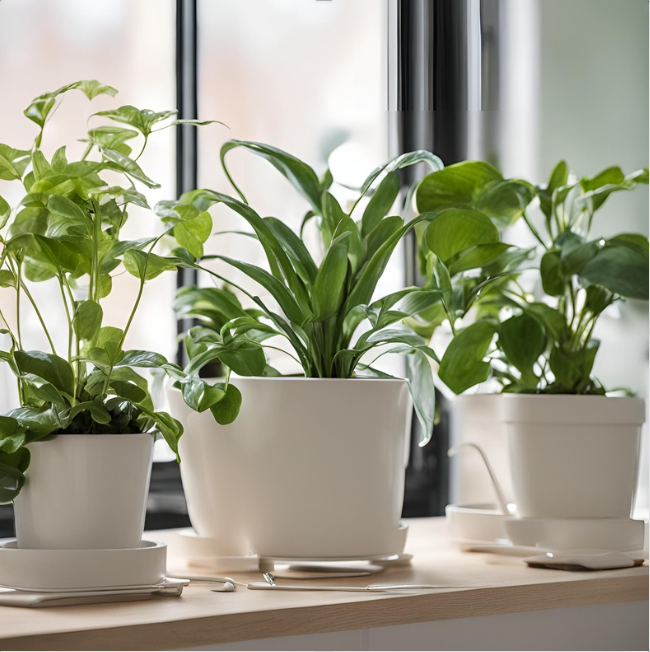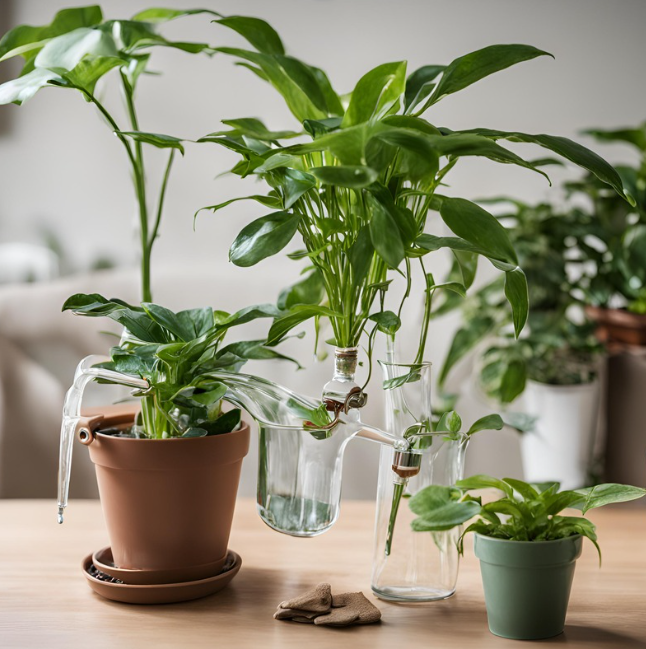Skip to content
Why We Need Indoor Plant Watering: Self-Watering Systems for Houseplants
Introduction
- Hook: Start with a compelling statistic or anecdote about the popularity of indoor plants.
- Thesis Statement: Introduce the need for effective indoor plant watering and the role of self-watering systems in meeting this need.
- Importance: Briefly explain the benefits of indoor plants and the challenges of proper watering.

Section 1: The Importance of Proper Watering for Indoor Plants
- Health and Growth: Discuss how adequate watering is essential for the health and growth of indoor plants.
- Common Watering Issues:
- Overwatering: Root rot and fungal infections.
- Underwatering: Wilting and stunted growth.
- Impact on Plant Lifespan: How consistent and appropriate watering affects plant longevity.
Section 2: Challenges of Traditional Watering Methods
- Inconsistent Watering: Issues with forgetting to water or watering too frequently.
- Watering Needs: Different plants have different watering requirements, making manual watering challenging.
- Lifestyle Constraints: Busy schedules, travel, and forgetfulness leading to irregular watering.
- Water Waste: Inefficiencies in water use with traditional methods.
Section 3: What are Self-Watering Systems?
- Definition: Explain what self-watering systems are and how they work.
- Components: Overview of the basic components of a self-watering system (reservoir, wick, soil moisture control).
- Types of Self-Watering Systems:
- Wick Systems
- Capillary Mats
- Reservoir and Float Systems
- Self-Watering Planters
Section 4: Benefits of Self-Watering Systems
- Consistent Moisture Levels:
- Maintains optimal soil moisture.
- Reduces the risk of overwatering and underwatering.
- Convenience:
- Less frequent manual watering.
- Ideal for people with busy lifestyles or frequent travelers.
- Water Efficiency:
- Minimizes water waste.
- Provides plants with water as needed, promoting healthier growth.
- Improved Plant Health:
- Prevents root diseases associated with improper watering.
- Supports steady, healthy growth by maintaining consistent moisture.
- Sustainability:
- Eco-friendly option by conserving water and reducing the need for frequent watering.
Section 5: How to Set Up a Self-Watering System
- Choosing the Right System: Factors to consider based on plant type and indoor environment.
- Step-by-Step Guide:
- Preparing the planter.
- Setting up the reservoir and wick.
- Adding soil and planting.
- Initial watering and ongoing maintenance.
- Maintenance Tips:
- Checking water levels regularly.
- Cleaning the system to prevent clogging.
- Adjusting for seasonal changes and plant growth.
Section 6: Common Myths and Misconceptions
- Self-Watering Systems Lead to Overwatering: Addressing concerns about waterlogging.
- They’re Only for Experienced Gardeners: Highlighting the simplicity and accessibility for beginners.
- Self-Watering Systems Are Expensive: Discussing cost-effectiveness and long-term savings.
Section 7: Popular Self-Watering Systems on the Market
- Product Reviews: Brief reviews of popular self-watering systems available for houseplants.
- Comparative Analysis: Comparing features, prices, and suitability for different plant types.
- User Testimonials: Real-life experiences from users who have adopted self-watering systems.
Conclusion
- Summary: Recap the importance of proper watering and the benefits of self-watering systems.
- Final Thoughts: Emphasize the positive impact of self-watering systems on plant health and indoor gardening convenience.
- Call to Action: Encourage readers to consider integrating self-watering systems into their indoor gardening routine.


